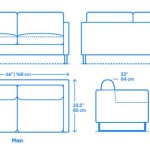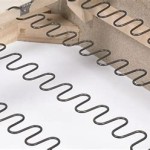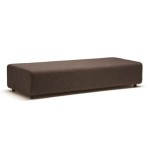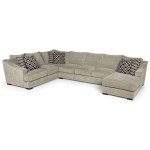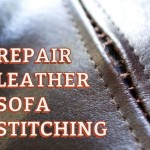Sofa Parts Description Diagram: A Comprehensive Guide
A sofa, a ubiquitous piece of furniture in modern living spaces, is more than just a comfortable place to sit. It's a complex assembly of various components, each contributing to its overall structure, comfort, and aesthetic appeal. Understanding the individual parts of a sofa, their functions, and their interrelationships is crucial for furniture designers, manufacturers, upholsterers, and even consumers interested in repairing or customizing their seating. This article provides a detailed exploration of sofa parts, utilizing a descriptive diagram approach to clarify their identification and roles.
A sofa parts diagram serves as a visual roadmap, illustrating the location and labeling of each component. This visual aid streamlines communication and comprehension, eliminating ambiguity when discussing specific elements of the sofa's construction. The level of detail in a diagram can vary depending on its purpose, ranging from simplified representations for general consumers to highly technical schematics for manufacturing professionals. Regardless of complexity, a well-constructed diagram is an invaluable tool.
Key Point 1: The Foundation - Frame and Support Structure
The sofa's frame is the backbone of the entire structure, providing the necessary support and stability. Typically constructed from wood, metal, or a combination of both, the frame determines the sofa's overall shape and size. The quality of the frame directly impacts the sofa's longevity and resistance to wear and tear.
Wooden frames are often made from hardwoods like oak, maple, or birch, known for their strength and durability. Softwoods like pine may be used in less critical areas, but generally, hardwoods are preferred for load-bearing components. Metal frames, often made from steel, offer exceptional strength and are commonly found in modern sofa designs. The joints of the frame are crucial for its structural integrity. Common joinery methods include mortise and tenon, dowel joints, and screwed or bolted connections. Reinforcing blocks are often added to corners to further strengthen the frame.
Within the frame, a support system is vital for distributing weight and preventing sagging. This system typically consists of webbing, springs, or a combination of both. Webbing, often made from jute, polypropylene, or elastic materials, is stretched across the frame to create a supportive surface. Springs, available in various types such as coil springs, sinuous springs (also known as zig-zag springs), and pocket coils, provide varying levels of support and bounce. Sinuous springs are particularly common due to their cost-effectiveness and ease of installation. Pocket coils, individually wrapped in fabric, offer superior support and minimize motion transfer, making them a popular choice for high-end sofas.
The support structure also includes components like the platform or deck, which sits atop the springs or webbing and provides a flat surface for the cushions. This deck is typically made from plywood or engineered wood, and it may be covered with a layer of fabric or padding to prevent wear and tear on the cushions.
Key Point 2: The Comfort Layer - Padding and Upholstery
The comfort of a sofa is largely determined by the padding and upholstery materials used. Padding provides cushioning and support, while upholstery covers the frame and padding, contributing to the sofa's aesthetic appeal and durability. The selection of appropriate materials is crucial for achieving the desired level of comfort and style.
Padding materials commonly include foam, fiberfill, down, and feathers. Foam is a versatile and cost-effective option, available in various densities and firmness levels. High-density foam offers superior support and durability compared to low-density foam. Fiberfill, typically made from polyester fibers, provides a soft and plush feel. Down and feathers offer exceptional comfort and warmth, but they require more maintenance and are typically more expensive. Often, a combination of padding materials is used to achieve the desired balance of comfort and support. For example, a sofa might feature a foam core wrapped in a layer of fiberfill or down.
Upholstery fabrics are available in a vast array of materials, colors, and patterns. Common choices include cotton, linen, wool, leather, synthetic fabrics like polyester and acrylic, and blends of natural and synthetic fibers. Cotton is a breathable and affordable option, but it is prone to staining and fading. Linen is a durable and luxurious fabric, but it wrinkles easily. Wool is a natural fiber that is resistant to stains and wear, making it a popular choice for high-traffic areas. Leather offers a sophisticated look and is highly durable, but it can be expensive. Synthetic fabrics are often more resistant to stains, fading, and wear than natural fabrics, making them a practical choice for everyday use. The choice of upholstery fabric should consider factors such as durability, comfort, aesthetic appeal, and maintenance requirements.
In addition to the outer upholstery fabric, a layer of lining fabric is often used to protect the padding and provide a smooth surface for the upholstery. This lining fabric is typically made from a lightweight material like muslin or cambric.
Key Point 3: The Finishing Touches - Cushions, Legs, and Trim
Cushions, legs, and trim are the components that add the finishing touches to a sofa, contributing to its overall style and functionality. These elements can significantly impact the sofa's appearance and comfort.
Sofa cushions come in various shapes and sizes, and they can be attached or detached from the frame. Attached cushions are typically sewn directly to the frame, providing a more streamlined look and preventing them from shifting. Detached cushions offer greater flexibility and allow for easier cleaning and replacement. Cushion fill materials are similar to those used for padding, including foam, fiberfill, down, and feathers. The cushion fill impacts the cushion's firmness and shape retention. Cushion covers are typically made from the same upholstery fabric as the sofa, but they can also be made from contrasting fabrics to add visual interest.
Sofa legs provide support and elevate the sofa off the floor. They are typically made from wood, metal, or plastic, and they come in a variety of shapes and styles, from simple tapered legs to ornate carved legs. The height of the legs affects the sofa's overall height and the ease of cleaning underneath it. The attachment method for the legs varies depending on the sofa's construction, but they are typically screwed or bolted to the frame.
Trim refers to decorative elements that enhance the sofa's aesthetic appeal. These elements can include piping, welting, tufting, nailhead trim, and skirts. Piping and welting are narrow strips of fabric that are sewn along the edges of the sofa, adding definition and visual interest. Tufting involves creating indentations in the upholstery fabric, often using buttons or other decorative elements. Nailhead trim consists of decorative nails that are applied to the frame, adding a touch of elegance or rustic charm. Skirts are fabric panels that hang down from the bottom of the sofa, concealing the legs and adding a more traditional look.
Other notable sofa parts, often visible in a comprehensive diagram, include the backrests, armrests (which themselves have internal structures and covering materials), and any additional features like reclining mechanisms, storage compartments, or integrated tables. Each contributes to the functionality and design of the overall piece.
In summary, a sofa is a complex assembly of numerous parts, each playing a crucial role in its overall structure, comfort, and aesthetics. A sofa parts description diagram is an invaluable tool for understanding the relationships between these components, facilitating communication and ensuring the proper construction and maintenance of this essential piece of furniture. From the robust frame providing foundational support to the intricate details of the trim, each element contributes to the final product's form and function.

These Are The Parts Of A Sofa Ilrated Diagram

Image Result For Parts Of A Sofa

These Are The Parts Of A Sofa Ilrated Diagram Home Stratosphere

What S In Your Sofa Bound Collaborative

Learning The Basic Components Of A Sofa Will Guide You In Describing Your Ideal Design To An Upholsterer We Ve Put Together This Custom Diagram For Further Understand And Visualize

These Are The Parts Of A Sofa Ilrated Diagram

Welcome To Stanton Sofas

How Sofa Is Made Material Making History To Make Used Parts

Www Sofa Com

American Craftsmanship Hickory Home Furniture


